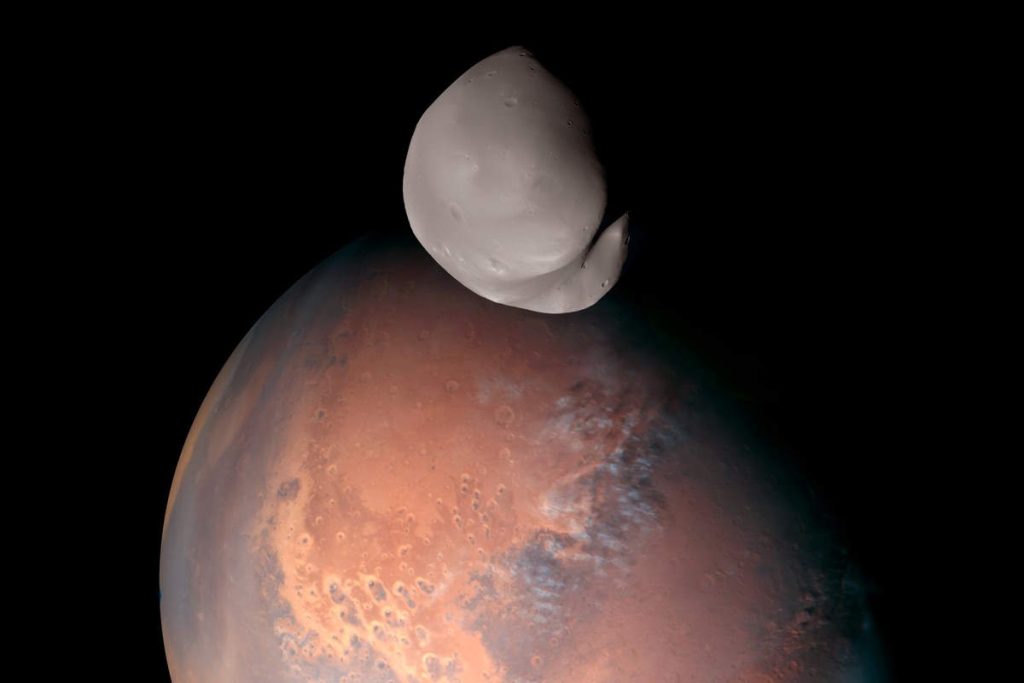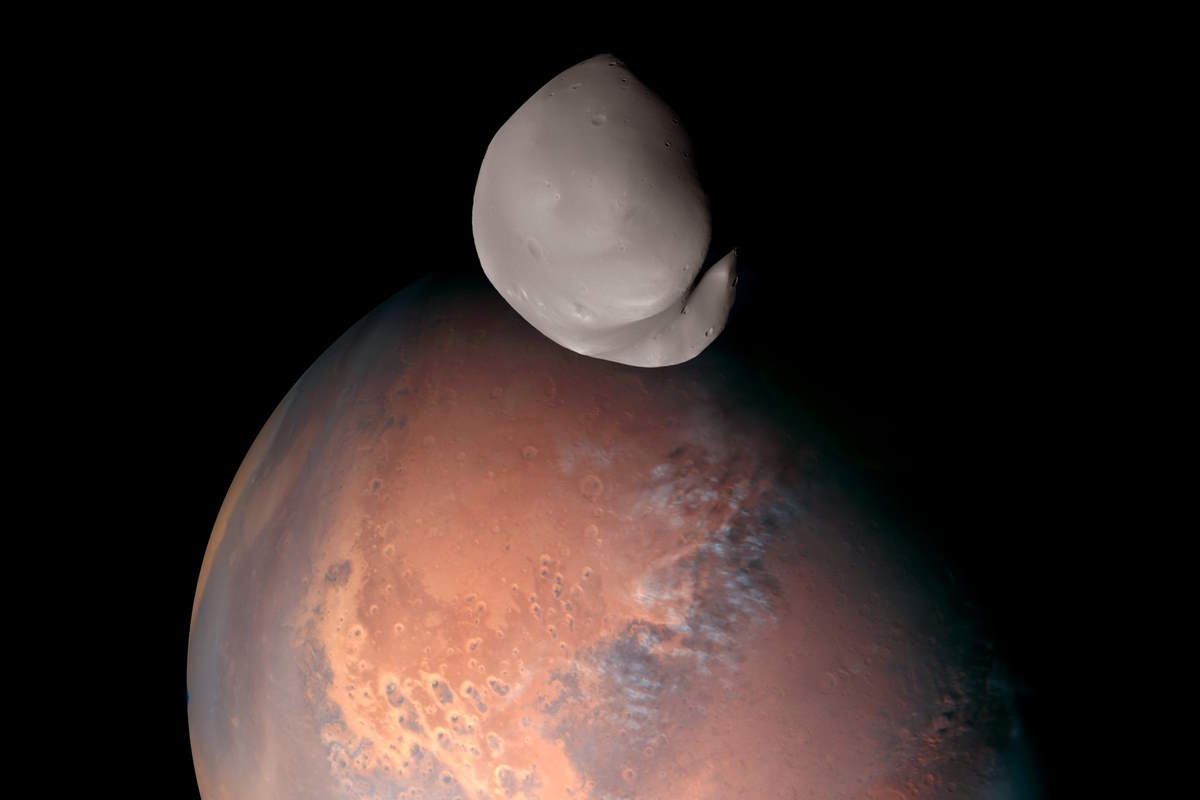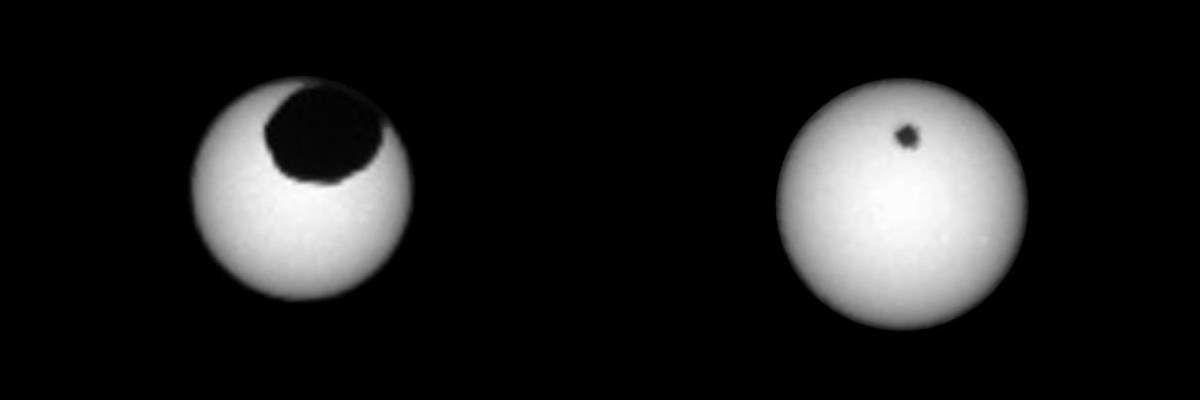United Arab Emirates’ Hope Probe (Arabic: Misbar Al-Amal, al-amal means “hope” in English), which entered Mars’ orbit in February 2021, has captured a breathtaking photo of Mars and its tiny moon Deimos.
The image showcases the two celestial bodies in a unique perspective, with Deimos appearing as a big rock (due to perspective) in the foreground, while Mars looms in the background in all its reddish glory. The picture, which was released by the Emirates Mars Mission, is a testament to the technical capabilities of the Hope Probe and its ability to capture incredible images of the Red Planet and its surrounding environment.

Deimos
Deimos (Mars II) is the smaller and outermost of the two natural satellites of Mars, the other being Phobos (Mars I). It is irregularly shaped and has a mean radius of 6.2 km (3.9 miles) and takes 30.3 hours to orbit Mars. Its distance from Mars is 23,460 km (14,580 miles). Its dimensions are about 15 km × 12.2 km × 11 km (9.32 × 7.58 × 6.84 miles).
Its mass is about 1.4762×1015 kg (only 0.00247 percent of Earth’s), so Deimos has very weak gravity, which means that objects on its surface would weigh only a fraction of what they would on Earth.
It is tidally locked to Mars (like Phobos), which means that it always presents the same face to the planet, like Earth’s Moon.
Mars’ larger satellite, Phobos has a mean radius of 11 km (7 miles) and orbits 6,000 km (3,700 mi) from the Martian surface.
Deimos was discovered on August 12, 1877, by Asaph Hall (October 15, 1829 – November 22, 1907), an American astronomer who also discovered Phobos a few days earlier.
Deimos is named after the Greek mythological figure Deimos, who was the son of Ares (Mars in Roman mythology) and the personification of terror and dread.
Emirates Mars Mission
The Emirates Mars Mission is an uncrewed expedition to Mars, with the Hope probe being launched on July 19, 2020, and successfully entering orbit around the planet on February 9, 2021. Its main objective is to conduct a comprehensive study of the daily and seasonal weather patterns, lower atmosphere weather events such as dust storms, and regional variations in weather on Mars.
Additionally, the mission aims to contribute to the understanding of atmospheric hydrogen and oxygen loss and potential reasons for the planet’s significant climate changes. The mission is a collaborative effort between Emirati engineers and foreign research institutions, serving as a contribution towards the development of a knowledge-based economy in the UAE.
Sources
- Deimos (moon) on Wikipedia
- Emirates Mars Mission on Wikipedia
- Space Shuttle Endeavour’s Touchdown Meets Columbia’s Salute [An amazing photo from the past] - February 29, 2024
- Moon Landings: All-Time List [1966-2024] - February 23, 2024
- From Orbit to Ordinary: 10 Earthly Applications of Space Technology - January 23, 2024

